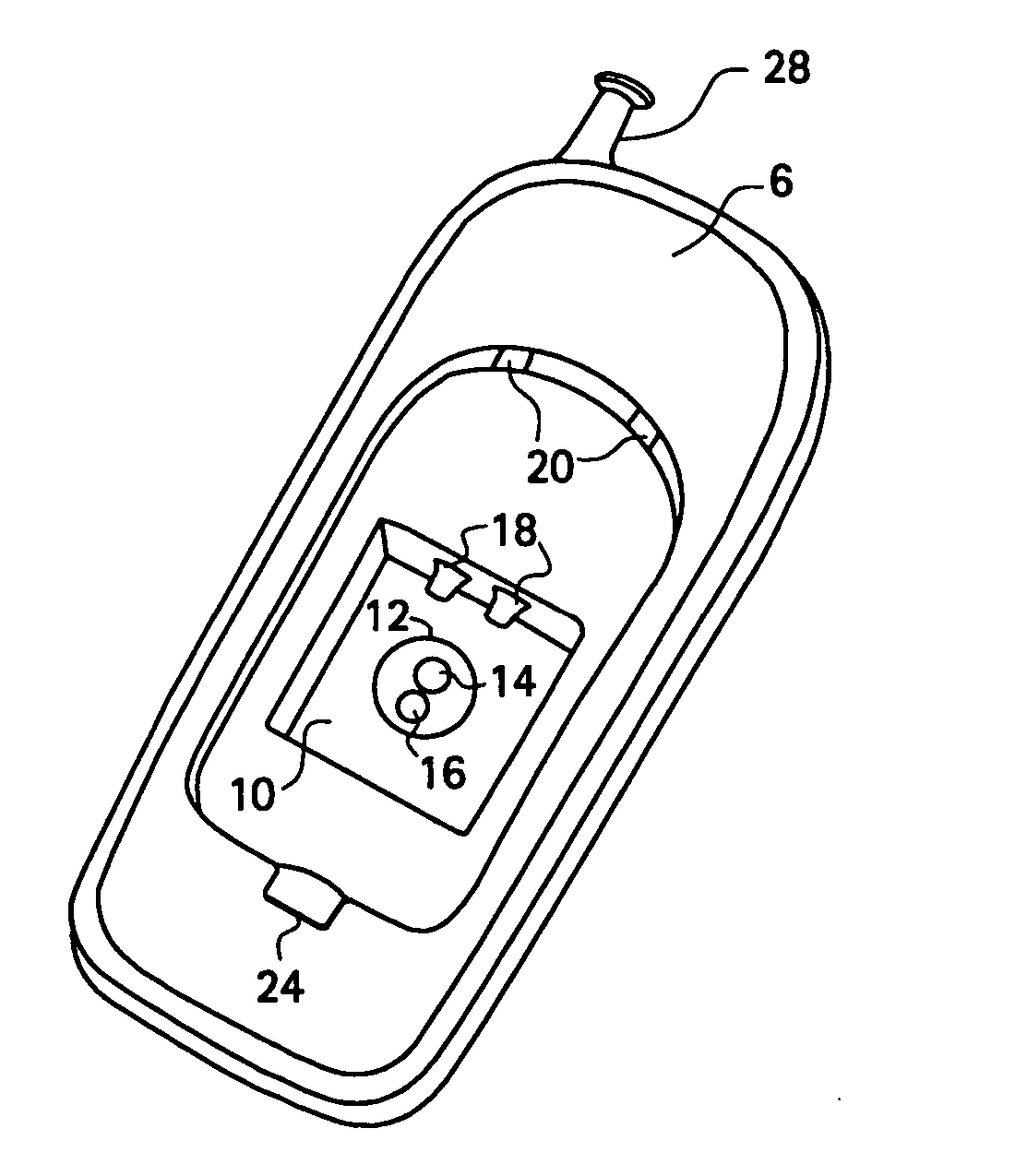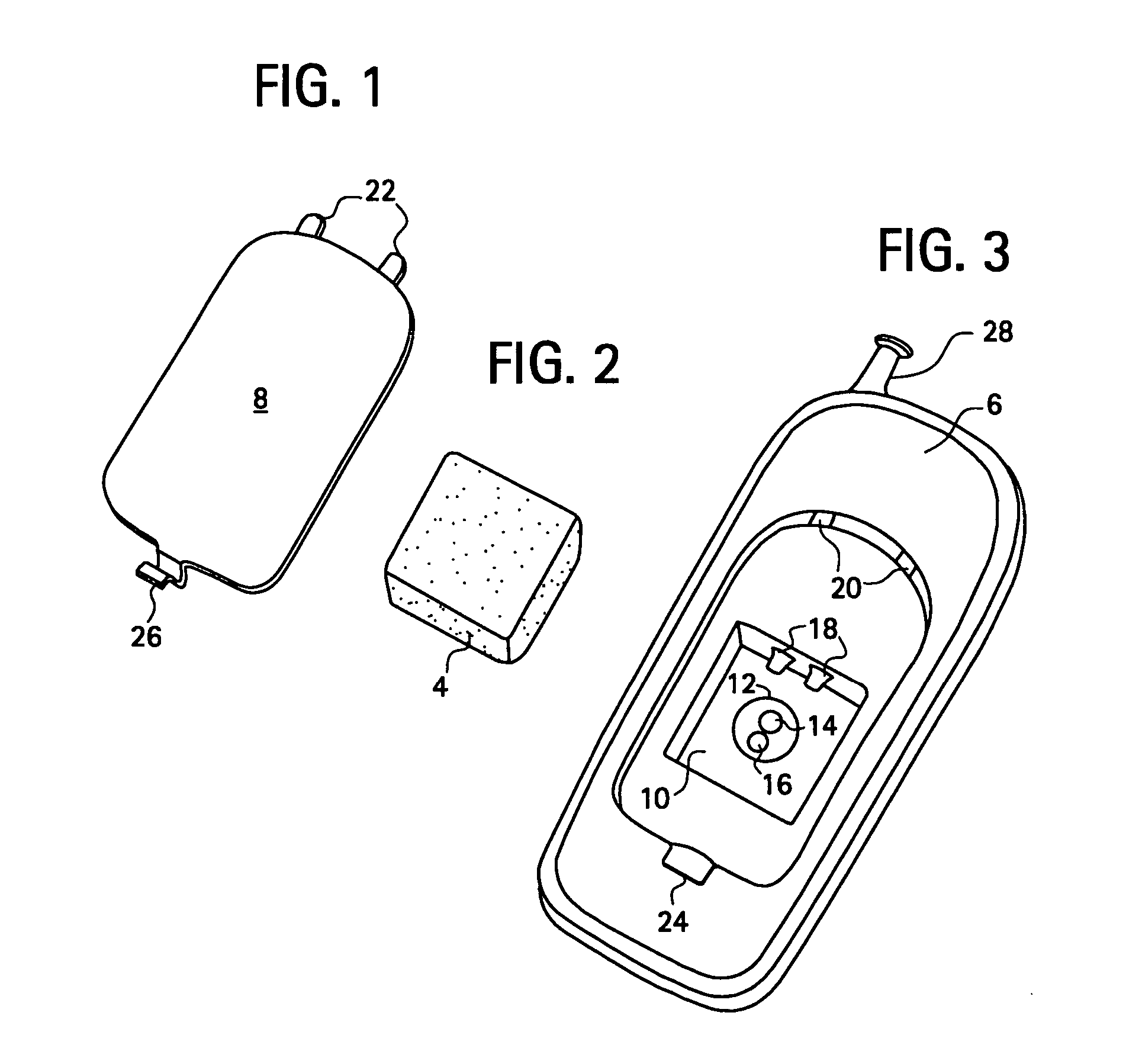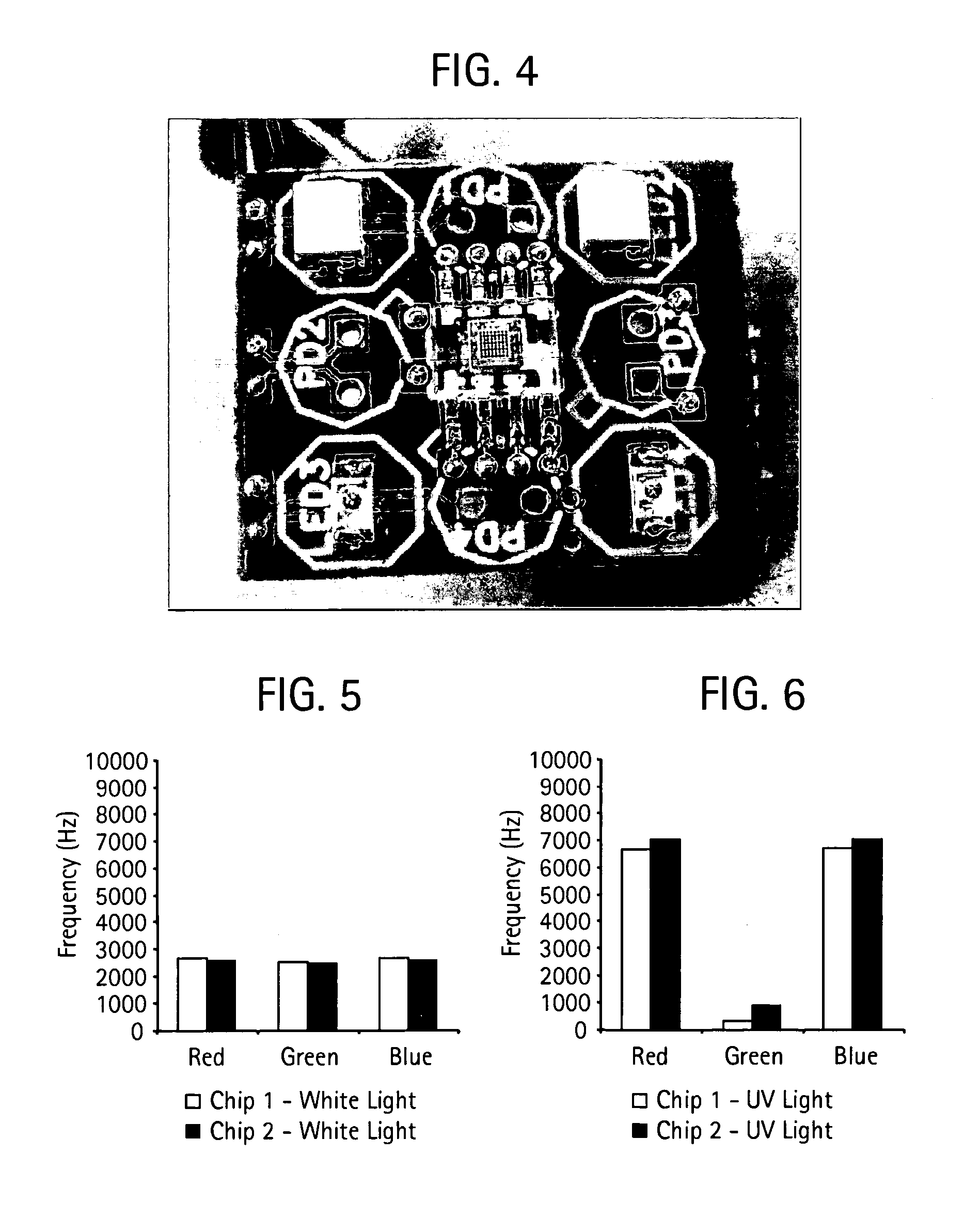Devices and methods capable of authenticating batteries
a technology of authenticating batteries and devices, applied in the direction of fluorescence/phosphorescence, primary cell maintenance/service, instruments, etc., can solve the problems of counterfeit products flooding the market, unauthorized manufactures are able to flood the market with counterfeit products, and consumers and manufacturers are adversely affected
- Summary
- Abstract
- Description
- Claims
- Application Information
AI Technical Summary
Benefits of technology
Problems solved by technology
Method used
Image
Examples
example 1
[0052] Resin to be used in battery pack applications was prepared in three typical colors (gray, black, and white) in a base polycarbonate-acrylonitrile butadiene styrene (PC-ABS) resin. A long Stokes shift fluorophore, namely Lumilux™ CD3090L of the benzimidazole family (commercially available from Specialty Chemicals Seelze GmbH, a subsidiary of Honeywell International Inc.), was used to create the tagged resin. Details of the formulations are given in Tables 1 and 2 below.
TABLE 1ComponentDetailsSourcePC-1Lexan ® CO23A; 100 grade polycarbonate with MwGE Plastics29,900 daltonsPC-2Lexan ® CO17; High flow polycarbonate with Mw ofGE Plastics21,800 daltonsPC-STLexan ® C 9030P; PC-siloxane copolymerGE PlasticsB-ABSBulk ABS comprising 16% rubber, balance styrene / acrylonitrileGE PlasticsTSANAntidrip agent comprising 50 wt % polystyrene-GE Plasticsacrylonitrile and 50 wt % polytetrafluoroethyleneDMBPC-PCLexan ® C891182; dimethyl bisphenolGE Plasticscyclohexane - polycarbonate copolymerBP...
example 2
[0056] This example illustrates the ability to trigger / detect a signal from a tagged battery pack material vs. non-tagged material using photo-detectors. In the simplest case, an unfiltered photodiode is used. In another example, a filtered photodiode is used (narrower band). In yet another example, a wide-band color sensor is used comprising a filtered red, blue, green, and white-photodiode detector array (TAOS TCS230, Texas Advanced Optoelectronic Solutions Inc., Plano, Tex.). The following are images of a prototype detector capable of measuring color and fluorescence.
[0057] Close up view of a suitable detector made with a TAOS TCS230 RGB photodetector, two white light surface mount LEDs and two 395 nm ultraviolet LEDs is illustrated in FIG. 4. The prototype detector was used to illuminate the color chips made from corresponding batches described above, under white light and ultraviolet light. The frequency response was then measured at three different wavelength ranges, which ro...
PUM
| Property | Measurement | Unit |
|---|---|---|
| heat resistance | aaaaa | aaaaa |
| heat resistance | aaaaa | aaaaa |
| heat resistance | aaaaa | aaaaa |
Abstract
Description
Claims
Application Information
 Login to View More
Login to View More - R&D
- Intellectual Property
- Life Sciences
- Materials
- Tech Scout
- Unparalleled Data Quality
- Higher Quality Content
- 60% Fewer Hallucinations
Browse by: Latest US Patents, China's latest patents, Technical Efficacy Thesaurus, Application Domain, Technology Topic, Popular Technical Reports.
© 2025 PatSnap. All rights reserved.Legal|Privacy policy|Modern Slavery Act Transparency Statement|Sitemap|About US| Contact US: help@patsnap.com



